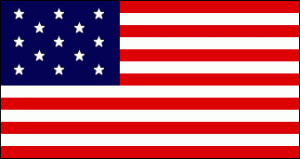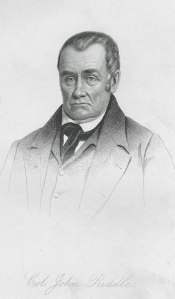Most people associate the Fourth of July with the birth of our nation and Flag Day, celebrated on June 14th every year, barely gets a second look. Why do we have a special day commemorating the Flag and why June 14th?
The Continental Congress passed the first Flag Act on June 14, 1777, which established an official flag for the new nation. The Act “Resolved, That the flag of the United States be made of thirteen stripes, alternate red and white; that the union be thirteen stars, white in a blue field, representing a new Constellation.”
This is the design that became the Official United States Flag on June14th, 1777. Each star and stripe represented a Colony of which there were thirteen, united nearly one year earlier by the Declaration of Independence. The only President to serve under this flag was George Washington (1789-1797). This Flag was to last for a period of 18 years until stars were added for other states that entered the union.
The idea of a day specifically celebrating the Flag is thought to have begun in 1885 by a school teacher in Wisconsin. The date of June 14th was chosen because it was the anniversary of the Flag Resolution of 1777, which was the official adoption of the American Flag design. The day became known as “Flag Birthday”, which eventually became Flag Day. The celebration of Flag Day spread and by the late 19th century, many communities throughout the United States were having ceremonies in the schools where children would carry a small Flag while patriotic songs were sung.
On May 20, 1916, President Woodrow Wilson made a Proclamation establishing Flag Day on June 14th. Flag Day was celebrated in various communities for years after the proclamation, but it wasn’t until August 3, 1949 that National Flag Day was signed into law by President Harry Truman.
This Flag became the Official United States Flag on May 1st, 1795. The 15-star, 15-stripe flag was authorized by the Flag Act of January 13, 1794, adding 2 stripes and 2 Stars. The two stars and stripes were added for the admission of Vermont and Kentucky into the union. This flag was the only U.S. Flag to have more than 13 stripes. It was immortalized by Francis Scott Key, when he wrote the poem The Star Spangled Banner, during the bombardment of Fort McHenry, Sept 13, 1814. This flag design lasted for 23 years, until 1818. Realizing that the addition of a new star and new stripe for each new State was impractical, Congress passed the Flag Act of 1818 which returned the flag design to 13 stripes and specified 20 stars for the now 20 states.
Sources:



